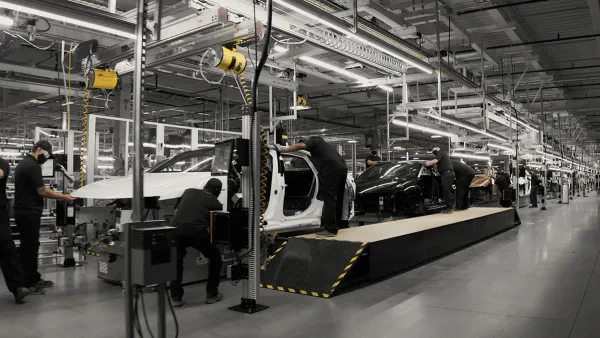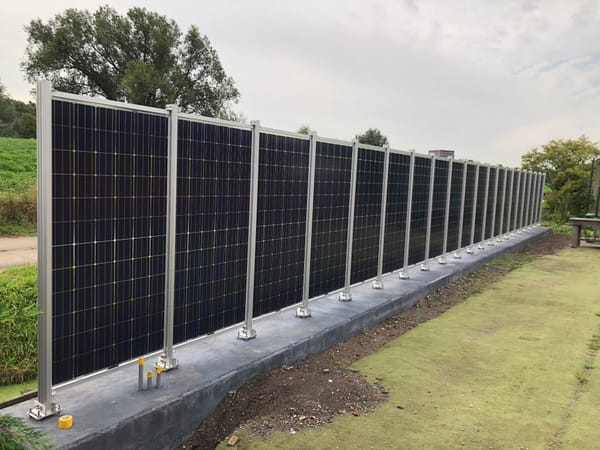The U.S.-China climate announcement is…actually pretty good news
Good Afternoon,
Tuesday’s APEC announcement between the U.S. and China was new, significant and could lead to many more big announcements down the line. Today, I’m providing an overview of what’s in the agreement, and how it could boost COP28.
And a reminder: I’m heading to Dubai for COP28 in less than two weeks. Starting November 30, I’ll be sending out a newsletter every day as I report on what I see at the negotiations.
-Mike
Previous Overviews of leading COP28 issues
- The four major issues shaping up COP28, plus one more
- Why we’re talking about abatement instead of fossil fuel phase out
- Developing country finances are now a top climate negotiating point
- How Global Stocktake results and carbon capture will play into negotiations
- Green energy financing, where will it come from?
- Concerns surrounding the COP28 president

Sometimes, when you hope really hard, dreams do come true. Well, not exactly…dreams. But maybe a decent diplomatic outcome resulting from months of hard work between opposing government officials who have decided to trust one another. So, that’s still pretty good, right?
Last Tuesday afternoon I suggested that perhaps the best possible short-term outcome of this week’s Asia Pacific Economic Cooperation meeting would be a climate agreement between the U.S. and China.
It’s possible the two countries could make a major climate move together to help calm relations. But that’s still a relatively outside possibility.
And look! It happened! On Tuesday evening, even before the meeting kicked off China and the U.S. announced a series of ways they plan to cooperate on climate. And while you could seriously debate whether or not it qualifies as “major”, I’m taking the sunnier view because since before Covid, the U.S. and China haven’t had normalized relations on anything, let alone climate.
A more negative perspective on the agreement is that since neither the U.S. or China announced concrete emissions cuts or specific dollar amounts to abating climate change, then it isn’t worth much. But both countries have serious limitations in that regard. First, the U.S. can’t agree to any kind of spending or significant economic change without the support of Congress. Considering the U.S. House is currently led by a climate denier and the Senate probably couldn’t get a majority vote for climate issues let alone 60 to lift cloture, that’s a very real limitation. For China, one could argue that Xi is a dictator and can get anything he wants, but I suspect he has limited financial means right now, as his economy is cratering and he’s likely getting pressure to find more income, rather than outgo.
In that light, I think there’s some really great things in this statement that we can all be excited about. Here’s a quick rundown:
- Renewables – The parties, “intend to sufficiently accelerate renewable energy deployment in their respective economies through 2030 from 2020 levels so as to accelerate the substitution for coal, oil and gas generation.” This is in line with the G-20 pledge to triple renewables deployment by 2030, a huge goal, but one that China is well on its way to achieving, and would likely require a U.S. follow up to the Inflation Reduction Act.
- Carbon Capture – “The two countries aim to advance at least 5 large-scale cooperative CCUS projects each by 2030, including from industrial and energy sources.” This is huge. Carbon capture tech is still very much in its infancy, and the two countries are each pursuing different solutions. The U.S. and China don’t willingly share tech in other sectors, so this could go a long way towards making carbon capture really work – which it definitely does not do right now.
- Methane – The agreement notes a plan to increase cooperation on methane action plans, a big change from the past, since until recently China pretty much ignored that it’s the world’s largest methane emitter. Opening to cooperation means opening to scrutiny, so perhaps this means China intends to take real action.
- Loss and Damages fund – The parties “should note the expectation of the developed countries that the $100b goal will be met in 2023, reaffirm the urging of developed country Parties to at least double their provision of adaptation finance; anticipate the adoption by COP 29 of the new collective quantified goal; and make finance flows consistent with the Paris Agreement goals.” While this isn’t a direct commitment to funding the Loss and Damage fund, it sounds like the two countries are looking to make sure it’s funded by this time next year. That would be a big, big deal.
- Plastics – “The United States and China are determined to end plastic pollution and will work together and with others to develop an international legally binding instrument on plastic pollution.” While this isn’t directly climate-related, the idea of an international agreement on plastics would be a major step forward.
- Lots More Cooperation – “Both countries intend to cooperate in promoting relevant policies and measures and the deployment of technologies to enhance synergy of controlling GHG emissions and air pollutants, including NOx, VOCs, and other tropospheric ozone precursors.” Again, nothing congress right now, but the idea of more cooperation – when there hasn’t been much for a long while – is a big deal. This is how bigger commitments begin.
As I said above, there’s a lot this agreement does not contain, like specific dollar commitments to projects, specific emissions targets, or a commitment to a fossil fuels phase-out date. But because of both countries’ current economic status and internal politics, I don’t think those things were ever in the cards. The commitments announced Tuesday – especially if Biden remains president past 2024 – sets the stage for some really big things down the line, and that’s something we haven’t seen between the U.S. and China ever before.
For COP28 though, the idea that the two biggest emitters are planning to cooperate on emissions and funding the Loss and Damage fund is a major morale booster. China and the U.S. are both competing for the hearts and minds of developing countries, which are home to minerals and other resources desperately needed for the green energy transition. The fact that these two countries are visibly working together on climate opens the door for many other countries to loosen up and make their own commitments. Dubai just got more interesting.
Other Things Happened
- No surprise, but this time they’ve got the receipts. “Hundreds of Large Companies Undermine Their Own Climate Pledges Through Lobbying”
- U.K. Environment Minister Thérèse Coffey was sacked in the country’s recent cabinet shuffle. She was noted for saying that species reintroduction was “not a priority” and that Britons should survive on turnips during a recent food shortage.
- The speed at which China is adding wind and solar is staggering. “China’s Wildly Complex Energy Transition, Explained in 8 Charts”
Welcome to the bottom of the newsletter. Here’s possibly the best site design I’ve seen: A concert promo site designed to look like Google Sheets. Unreal.





